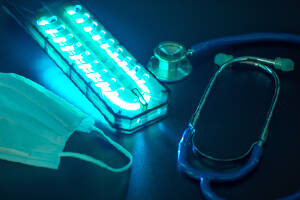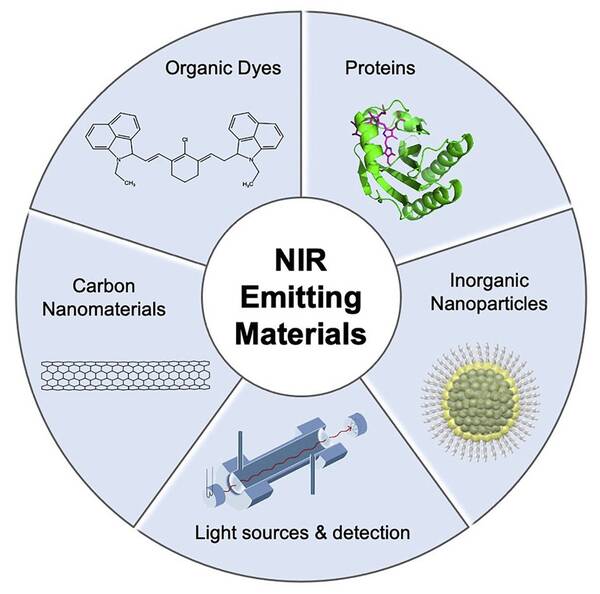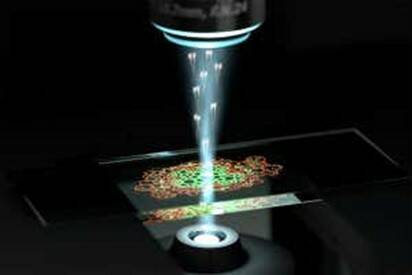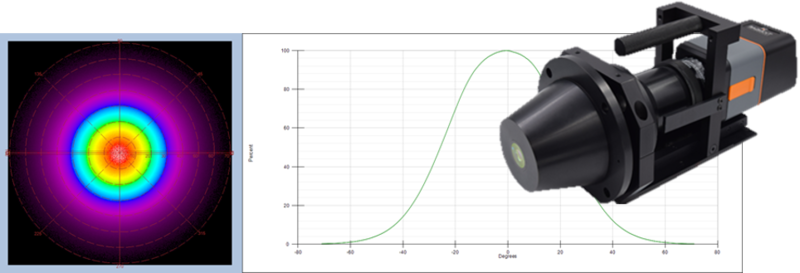From UV Disinfection to Mini Lightsabers: the Latest in Optics
From bar-code readers to prescription eyeglasses, from the fibers that carry global network communications to laser surgery techniques that are saving lives, optical physics is all around us. Scientific research and technology developments continue to advance our understanding of and ability to leverage the power of light to benefit human society. Plus, optics is cool—lightsabers! Read on to learn about some recent discoveries and developments…
Using UV Light to Disinfect and Enhance Safety
As a result of the pandemic, 2020 could be called the Year of the Disinfectant, as many public spaces and homes underwent perhaps more deep cleaning and sanitizing than ever before. Ultraviolet (UV) spectrum light also received attention for its disinfecting properties. Using UV light (specifically UV-C) to disinfect spaces such as medical facilities and public transit was already a common practice, but this application took on new importance for its potential to kill SARS-CoV-2, the coronavirus that causes COVID-19.

Recently, a study at Canada’s University of Waterloo shows that UV light can provide further protection from disease. Benzalkonium chloride (BAK) is a common active ingredient in many disinfectants that are used in hospitals, homes, and food processing plants. However, in higher concentrations it can be toxic to humans and the environment. Researchers at the university found that exposing BAK to UVC light neutralized its toxicity without reducing its effectiveness against viruses and harmful bacteria. This makes it safer to use to keep our spaces COVID-free.1
Meanwhile, researchers at Osaka University in Japan have developed a solid-state second-harmonic generation (SHG) device that converts infrared (IR) radiation into UV light. Deep ultraviolet light (DUV) sources in the wavelength range of 220-230 nm are highly effective for disinfection and sterilization. However, a durable and efficient DUV light source has not yet been successfully developed. This breakthrough could lead to a more practical daily-use device that provides strong UV disinfection.
Solar-Powered Mini Aircraft Soar into the Mesosphere
The mesosphere is the part of our atmosphere that ranges from roughly 30-50 miles above earth’s surface at the edge of outer space. Because the air is so thin (so few molecules), hot air balloons and traditional aircraft are unable to fly up there. This has made it difficult to gather information about the mesosphere, which produces mysterious clouds, exotic light bursts, and contains iron and metal ions left over from meteorites.
Scientists from the University of Pennsylvania have now found a way to create tiny, light-powered fliers that can travel in mesospheric conditions, made of 1 cm-wide Mylar discs coated on one side with carbon nanotubes. “When illuminated with light intensity comparable to natural sunlight, the polymer disk heats up and interacts with incident gas molecules differently on the top and bottom sides, producing a net recoil force.”2 This force keeps the fliers elevated even without air, as illustrated by their activity in the vacuum chamber shown in the video below. The mini aircraft can carry up to 10 mg, such as lightweight cameras or scientific instruments, enabling them to collect previously unobtainable data from the upper atmosphere.
New Understanding of Aurora Borealis
Called the Northern Lights, Southern Lights (aurora australis), Polar lights, “nature’s light show,” and in Finnish, ‘Fox’s Fire,” the aurora borealis phenomenon has been enchanting humankind for millennia. Now scientists have been able to understand just how these shimmering lights are formed.

We knew that electrons carried by solar wind cascade into Earth’s upper atmosphere, interacting with the planetary magnetic field (magnetosphere) and colliding with oxygen, nitrogen, and other molecules to create billions of tiny bursts of light. For decades, scientists suspected that the electrons rode ripples in Earth’s magnetic field called Alfvén waves. A new experiment at Wheaton College has shown that this is indeed the mechanism behind the aurora borealis, and also suggests that similar phenomena could exist on Mars and Jupter.3
Advancements in Luminescent NIR Materials
Near-infrared (NIR) luminescent materials (materials that naturally emit light in the NIR region from roughly 700-2500 nm) have attracted growing interest in recent years. The unique characteristics of NIR light, particularly its ability to penetrate biological tissues with minimal interference, could yield multiple possible applications in optical physics, chemistry, and biology. For example, some developers are exploring the use of these organic NIR emitters for advanced LEDs. Medical imaging scientists are looking at applications such as multi-channel imaging, optogenetics, lasing, and detection.

Some of the main applications for luminous NIR materials include organic dyes and carbon nanomaterials, which can be used for various biological imaging; inorganic nanoparticles, with applications in quantum dots and semiconductors; proteins, which can be used for gene therapies such as viral-vector delivery; and light sources & detection, which can potentially enhance fiber lasers and LEDs, among other applications. (Image Source)
Issues with stability, low quantum yield, and limited tunability have hindered the use of luminous NIR materials outside of the laboratory thus far. But scientists have continued making headway and a new surge in research has recently yielded improvements in understanding and controlling organic NIR materials. Learn more…
Quantum Microscope Captures Greater Detail
Microscopes have been a boon to scientific and medical research and practice, enabling close-up views of single cells and cellular structures. However, modern microscopes for biological applications have an inherent limit to the precision they can achieve. They work by shining bright lights on the object being viewed, but at a certain point, a bright enough light will destroy a cell. A new type of quantum microscope promises to overcome this problem.
Researchers at the University of Queensland in Australia have created a microscope that has two laser light sources, with one of the laser beams sent through a specially designed crystal that “squeezes” the light. It does this by introducing quantum correlations in the particles of light (photons) in the laser beam. “The photons were coupled into correlated pairs, and any of them that had energies unlike the others were discarded instead of being paired off. That process lowered the intensity of the beam while decreasing its noise, which allowed for more precise imaging.”4
Using this light-squeezing technique, the researchers were able to make measurements that were 35% sharper. Light-based microscopes are often used to examine cells for cancer and other disease diagnoses; new quantum microscopes could increase both sensitivity and speed of these medical tests. Learn more…

An artist’s illustration of a quantum microscope. (Image credit: The University of Queensland)
Lightsabers and Space Battles
That’s right, the holographic research group at Brigham Young University have created tiny, real-life lightsabers—green for Yoda and red for Darth Vader, of course. They also “engineered battles between equally small versions of the Starship Enterprise and a Klingon Battle Cruiser that incorporate photon torpedoes launching and striking the enemy vessel that you can see with the naked eye.”5
The team based their latest advancement on a technique called optical trap displays that they pioneered a few years ago. These displays work by trapping a single particle in midair with a laser beam and then moving it around, creating a laser-illuminated path. The images float in space, an exciting step towards a future of immersive, interactive holographic technology.
Measuring Light Sources
For any application or product that uses light waves on or around humans, especially within the medical arena, it’s important to conduct careful measurement and quality testing. Light in the NIR and UV spectrum can be a powerful tool but can also damage human tissues if not properly controlled. A quality testing regimen using measurement systems in the design phase and during production of light sources helps ensure that light emissions are at the correct wavelength to optimize both effectiveness and safety.
Radiant Vision Systems and our colleagues at sister companies in the Konica Minolta Sensing (KM Sensing) business unit have spent decades developing optical technologies to measure and analyze light sources—including NIR light, the visible spectrum (from approximately 380-740 nm), and UV radiation.
Light & Color Distribution
Radiant ProMetric® Imaging Colorimeters and Photometers make precise, spatial measurements of luminance and chromaticity. Designed around scientific-grade image sensors in a range of high-resolution options, they are calibrated to replicate human photopic response to brightness and color. The ProMetric Y imaging system is also available in radiometric mode, for example, to measure NIR emitters beyond the visible spectrum.
Ultraviolet Light Measurement and Standards
KM Sensing has been providing UV measurement instruments for many years and helping to set UV LED calibration standards to address the hazards of blue light. KM Sensing provides an all-in-one system for determining various measurement quantities and tools to verify measurement results. Learn more about their UV measurement instruments for both lab and production applications.
Measuring NIR Emitters
Radiant’s NIR Intensity Lens provides fast, accurate measurement of NIR light sources and distributions, such as those used for facial recognition and other 3D sensing applications. Integrated with a ProMetric Y Imaging Radiometer and our TT-NIRI™ Software, the NIR Intensity Lens solution measures the angular distribution and radiant intensity of 850 or 940 nm NIR emitters, using Fourier optics to capture a full cone of data in a single measurement to +/- 70 degrees.

Radiant’s NIR Intensity Lens solution uses a ProMetric Y imaging radiometer to measure the output of NIR sources such as LEDs and lasers, including flood sources, time of flight (TOF) emitters, and structured light patterns created by diffractive optical elements (DOE).
CITATIONS
- Manlong Xu, Jacob G. Sivak, David J. McCanna. “Neutralization of the eye and skin irritant benzalkonium chloride using UVC radiation.” Cutaneous and Ocular Toxicology, 2021; 1 DOI: 10.1080/15569527.2021.1902339
- Delbert, C., “The Carbon Nanotube Aircraft That Will Take Us to the Edge of Space.” Popular Mechanics, March 2, 2021.
- Schroeder, J.W.R., Howes, G.G., Kletzing, C.A. et al., “Laboratory measurements of the physics of auroral electron acceleration by Alfvén waves.” Natural Communications 12, 3103 (2021). DOI: https://doi.org/10.1038/s41467-021-23377-5
- Crane, L., “Quantum microscope can examine cells in unprecedented detail.” NewScientist, June 9, 2021.
- “Hologram experts can now create real-life images that move in the air.” In ScienceDaily, May 7, 2021, reporting on published journal article: Rogers, W. and Smalley, D., “Simulating virtual images in optical trap displays.” Scientific Reports, 2021; 11 (1) DOI: 10.1038/s41598-021-86495-6
Join Mailing List
Stay up to date on our latest products, blog content, and events.
Join our Mailing List
